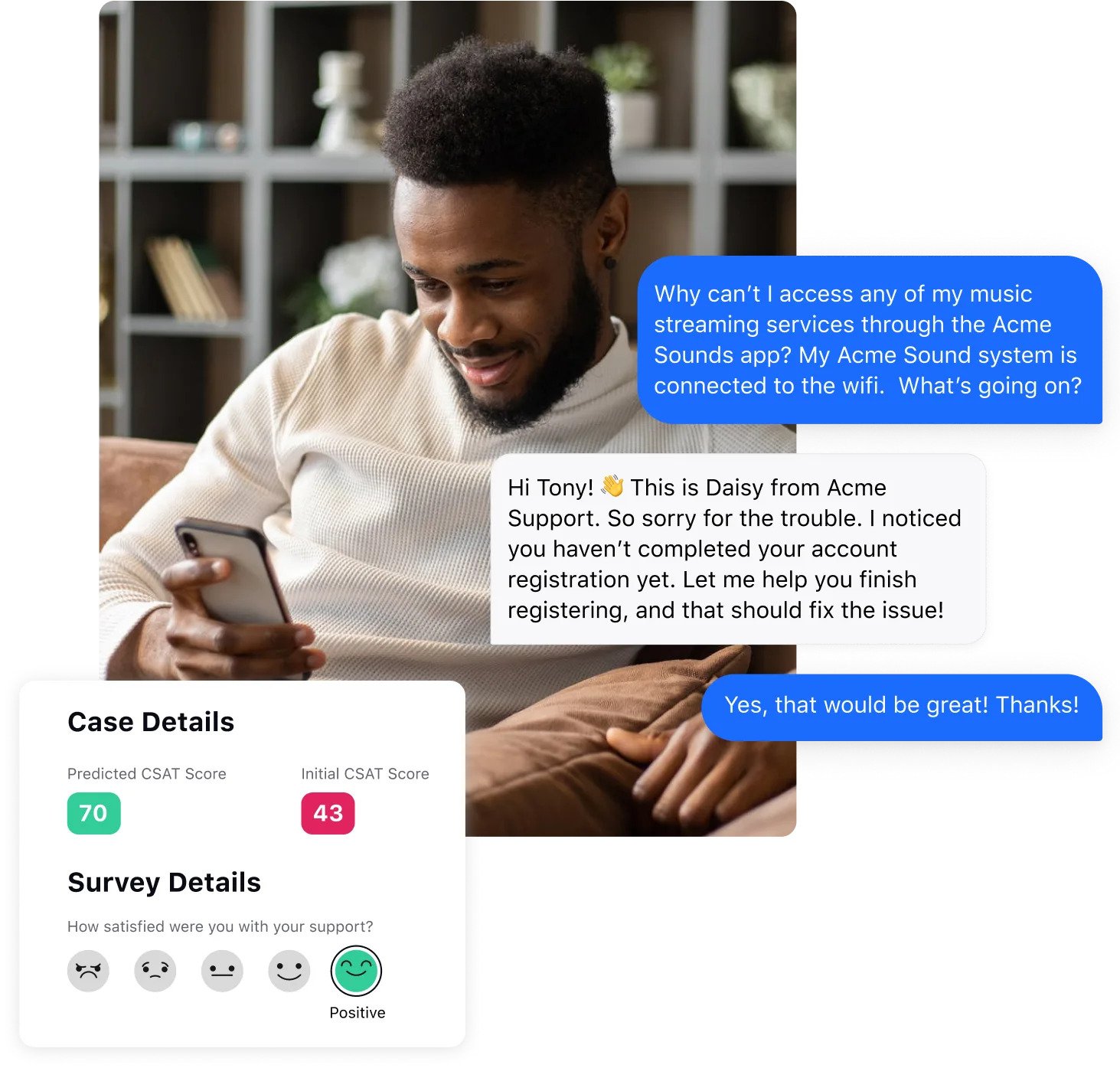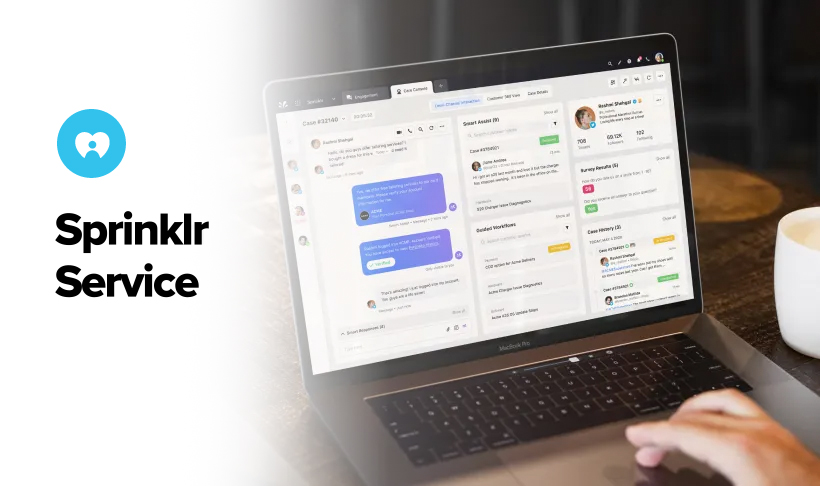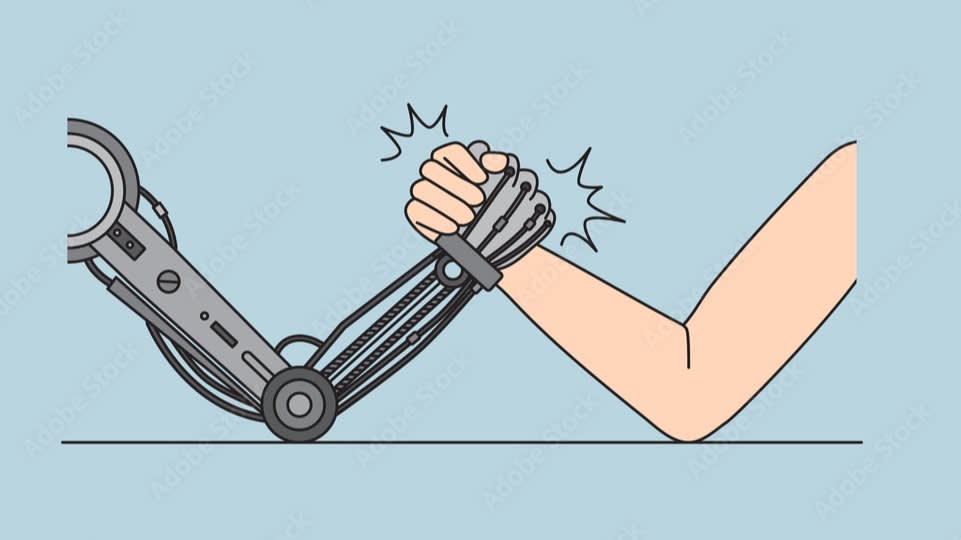Did you know, according to HBR, a 5% increase in customer retention can boost profits by up to 95%? And here's another tidbit: it's about 25x costlier to get a new customer than to keep an existing one. That's a big deal.
Every time a customer chooses to come back, they're essentially casting a vote of confidence in your brand. They believe in your product, value the service they receive and feel a connection strong enough to return.
Take 2020, for instance. It was a challenging year for everyone. The shoe company, Zappos introduced a hotline to support its customers in more than just online shoe shopping. Need to ask about shoes? Cool. Just want to talk? That works too.
When Rose Wang dialed in to ask about a gift receipt for the Crocs she was gifting to her mother — the warm Crystal Muozon engaged her in a candid chat. And just like that, Rose opened up about her relationship with her mother, her upcoming trip to Hawaii and her favorite restaurant in Las Vegas.
The result? Zappos won a loyal customer in Rose.
Companies go the extra mile for loyalty. But how many of your customers really stick around? And how can you measure your customer retention rate?
Let’s take a look.
What is customer retention rate?
Customer retention rate is the percentage of customers your business retains over a set period. It shows the effectiveness of your customer support and loyalty-building initiatives.
Customer retention is typically calculated by the following formula:
Customer retention rate (CRR) = [(Customers at the end of a period – new customers acquired during this period) / customers at the start of the period] X 100
The higher the customer retention rate, the more satisfied your customers are with your service and the better the revenue and business growth.
Customer retention rate vs. Customer churn rate: Which one should you measure?
Retention rate and churn rate are inversely correlated but are two sides of the same coin. While both measure customer loyalty, they focus on slightly different aspects.
Customer retention rate provides insights into how effective a business is at keeping its customers over time.
It's particularly valuable for subscription-based models — like streaming services or monthly subscription boxes, where keeping subscribers over the long term directly affects revenue.
Customer churn rate, however, is the percentage of customers that stopped using your company's product or service during a specific time frame.
Customer Churn Rate = (Number of customers lost during a fixed period / Number of customers at the start of the period) × 100%
Monitoring your customer churn rate is crucial for spotting issues early. For example, if a software company releases a new update and the churn rate spikes, it's a clear sign something in that update isn't sitting well with users.
In practice, both of these customer service metrics matter.
Retention rate can be more optimistic, emphasizing growth, while churn rate provides a reality check on potential problems. Ideally, you want a high retention rate and a low churn rate.
Calculating the customer retention rate is essential to measure your business success. Here are the reasons why it is so important.
Reasons why you should calculate customer retention rate
In a marketplace where attention is fleeting, understanding the underlying economics of retention is key. Customers are spoiled for choices; a financial blueprint centered on consistent customer retention should guide your business. Here is the importance of calculating customer retention rate.
Boosts profitability and sustainable growth: A higher customer retention rate indicates reduced customer churn. Retaining more customers also helps you reduce your marketing spends and stabilizes your revenue stream.
Enhances customer loyalty: Customers stay with your brand when they like your offerings. Returning customers often spend more and purchase more regularly, accounting for up to 65% of your total sales. That’s why focusing on raising your customer retention rate helps you build and capitalize on brand loyalty.
More referrals: A higher customer retention rate means more referrals and a widening customer base through word-of-mouth. Investing in customer retention helps you to keep your existing loyalists happy, who bring in more customers for you at zero acquisition costs.
Customer retention rate formula
Wondering how to calculate the customer retention rate? The formula below can help you uncover this crucial ratio for your business.
Step 1: Determine the time period
Determine the specific duration you're evaluating, such as a month, quarter or year.
Step 2: Tally initial customers
Record the total number of customers you had at the beginning of the time frame. This gives you an initial reference point. Let's call this number Customers at Start.
Step 3: Tally final customers
Determine the total number of customers you have by the end of your selected time frame — including both returning and new customers. Let's call this number Customers at End.
Step 4: Calculate new customers
Count how many new customers came on board during the selected time frame. This helps in identifying which customers are truly "retained" from the previous period. Let's call this number New Customers Acquired.
Now, you can calculate the customer retention rate using the following formula:
Customer Retention Rate = (Customers at end − New Customers acquired) / Customers at start × 100%
For example, say you have 500 customers on April 01, 2022 and you lose 50 of them and gain 200 new ones as on March 31, 2023.
Your CRR would be:
Total customers at the start of a period = 500
Total customers at the end of a period = 500 – 50 + 200 = 650
New customers acquired during this period = 200
So, CRR = [(650 – 200) / 500] X 100 = 90%
Every figure in this formula says a lot about your business.
For instance, even if you get a high customer retention rate but lose many customers during a period, it reveals that something about your service isn’t going right and you need to take corrective action. It could be a bumpy onboarding experience or product/service usage issues or hidden costs that are throwing off new customers.
Factors impacting customer retention
As the adage goes, “It's not about the first sale, but the many that follow.” This mantra remains true where consumer attention is a prized commodity. To keep it tethered to your business, consider these factors that impact customer retention.
1. Product and service quality
The caliber of what you offer is the backbone of customer retention. If the customer isn’t happy with the product or service quality, it can be a deal-breaker. Simply put, no matter how fantastic your marketing or customer service may be, if the core product or service doesn't deliver, you risk losing that customer for good.
2. Customer satisfaction
Besides a killer product in the market, your overall user experience often does the trick. Personalization, convenient shopping experience, fast customer response times all contribute to customer satisfaction — and ultimately retention. For example, Amazon works to retain customers with personalized user experience, great discounts and a super-easy checkout and payment method.
3. Trust factor
Trust builds the foundation for customer loyalty and ultimately, retention. Consistent support through a contact center shows your brand’s commitment and reinforces their trust in you.
4. Competitive brand fluidity
The ease of migrating to a competitor can greatly impact your customer retention rate. Solid loyalty schemes, advanced tech features and user-centric interfaces can make it easier for your customers to switch sides. Change in a customer's job or location can shift their preferences. For instance, they might lean towards a competitor that better aligns with their new job's demands or is more prevalent in their new city.
Pro-tip: Finding the precise reasons why they aren’t in for the long haul is intense. AI built to pull out insights can track consumer trends over micro-periods to enable instant action. It can decode root causes and suggest actionable steps for you. Bypass manual analysis and deliver relevant, moment-specific recommendations to customers with AI-oriented reporting and analytics software. Clarity and insight, all in one package!
Metrics to gauge your customer retention levels
Retention rate is just the tip of the iceberg. Beneath? A deep sea of motives and patterns. To understand why your customers are staying or leaving, you need to delve beneath the surface level. Here are additional metrics you need to understand your product stickiness.
Metric | Definition | Formula | Insight/Utility |
Monthly Recurring Revenue (MRR) | Revenue generated monthly through subscriptions | MRR = Average revenue per account x Number of monthly active users | Indicates customer retention & lesser churn, especially useful for monthly revenue business models |
Expected revenue from a customer during the relationship lifespan | CLV = Average revenue per customer account / Customer churn rate | Shows a customer's worth and investment in retention. A high CLV indicates healthy retention and purchasing | |
Repeat Purchase Rate (RPR) | Ratio of existing customers making additional purchases within a period | RPR = (Customers who buy more than once / Total number of customers) x 100 | Indicates customer loyalty. An RPR between 20% and 40% is considered good |
Understanding of how content customers are with your service | Measured with customer surveys or CSAT software | Evaluates service satisfaction and gives improvement insights |
By now, you may have a lot of ideas about how to improve your customer retention rates. However, you can take a cue from the industry's best practices.
Best practices for customer retention
In an era where customers are inundated with choices, retaining them is both an art and a science. Here are the best practices to retain your customers.
1. Strong customer support
A skilled personnel that can understand customers’ service issues and provide apt resolution in time is indispensable. Customer retention helps improve your retention rate and protects your brand image.
Need inspiration?
Look no further than boAt – a brand that redefines customer support in terms of speed and quality, using advanced metrics like Predicted CSAT that can predict customer satisfaction at key moments during ongoing interactions.
The AI-led metric tracks 10K conversations daily, giving rich real-time insights that enable handling agents to solve cases quickly and move to the next without missing a beat. Read the full story here.

2. Build strong loyalty programs
Loyalty programs incentivize your customers to return to your brand. For example, Shazam, the music discovery app, offers its customers a free subscription to Apple Music for a few months as gratitude and to keep them hooked.
Check this video out:
3. Simplify onboarding
The first experience shapes lasting impressions. A swift, intuitive start can make customers feel welcomed and valued from the outset, boost customer commitment and set a positive trajectory for future interactions.
Ask user's preferences to shape their initial experience, reducing confusion and overwhelm.
Give bite-sized tutorials during navigation, with timely tips for clarity.
Provide live chat for instant support, flattening out onboarding hurdles.
4. Employee advocacy
Employees are more than staff; they're brand ambassadors. Promoting employee advocacy means they not only represent, but also believe in the brand. When empowered to make decisions, they champion genuine, retention-focused interactions with customers.
Run an advocacy program for employees to share approved brand content on personal channels.
Conduct regular training sessions emphasizing the brand's core values and mission.
Offer incentives and rewards for consistent and authentic brand promotion by them.
5. Engage in digital outreach
Your online presence — via social media or email — shouldn't just be about periodic updates. It should be a blend of useful information (like delivery updates), genuine gratitude (perhaps in the form of exclusive discounts) and consistent reminders of your brand's value proposition to ensure you remain top-of-mind.
6. Focus on your customers’ interests
Ensure your content is aligned with your customer’s interests. Seek questions, feedback and complaints via customer surveys. Use this insight to personalize your marketing — be it about new offerings or reminders of past favorites — to ensure that your brand's voice resonates with what the customers genuinely want to hear.
7. Grievance redressal
Addressing complaints is about fixing issues and gaining trust. Establishing a responsive system to handle grievances promptly shows customers their concerns matter, turning potential setbacks into strengthened loyalty.
8. Regular updates
Consistently sharing product updates keeps customers in the loop, reinforcing their decision to invest in your brand. Improving and periodically communicating is a testament to your brand's commitment to evolution. Take, for instance, a software tool: if users previously flagged a performance glitch, an update promptly addressing it shows a company's dedication to user feedback. All of which improves their experience with you — and expectantly your retention.
Customer retention equals business success
In a saturated market, genuine gestures stand out.
Like Zappos, Uber is another example of a brand that used 2020 to recalibrate its customer support. It set up a rapid response team that proactively listened to critical safety concerns and took action at lightning-fast speeds. If that doesn’t show care and commitment towards customers, then what does?
Beyond tactics, what truly anchors customers is a brand's sincerity, unwavering quality and responsive support. Prioritize a stellar user experience; it's the linchpin of customer retention.
If you’re seeking clarity on navigating this terrain, our ebook offers a deep dive. It unpacks how AI and automation can preemptively address customer concerns, enhance self-help resources and streamline agent workflows. Deliver frictionless support and boost your customer retention rates with the first purpose-built CCaaS platform — so you don't just bridge the experience gap — you obliterate it. Watch it in action now.
Frequently Asked Questions
Measure it consistently, regular intervals, at specific touchpoints during the journey. You should keep the gaps consistent to be able to map the progress.





